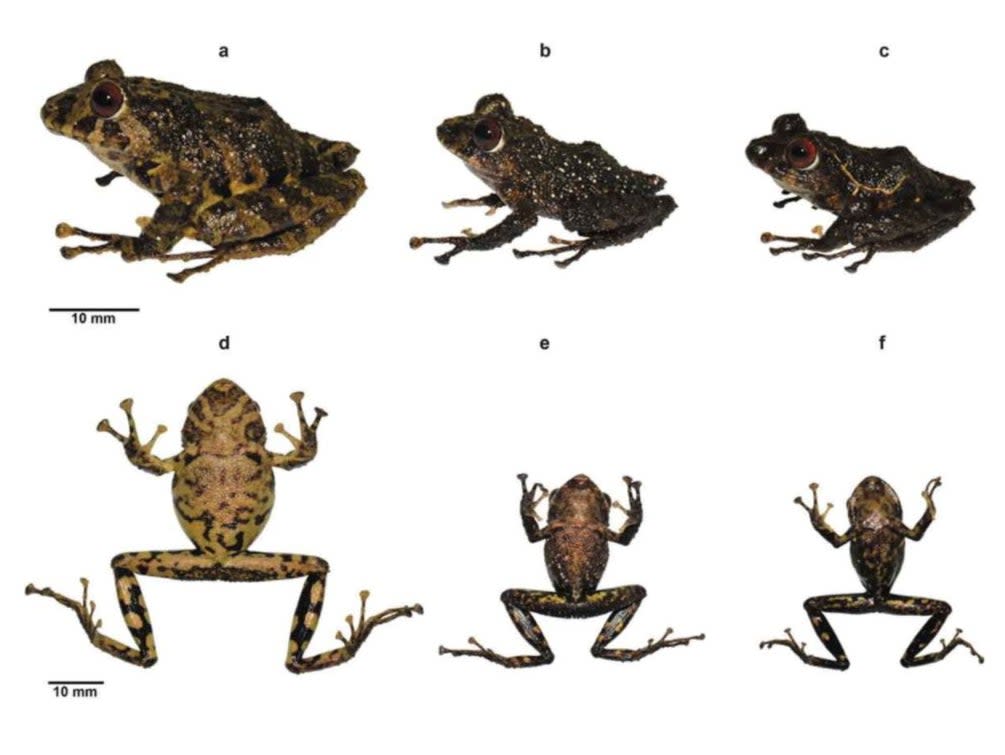Misty Mountain Hop: Newly discovered Andean frog named in honour of Led Zeppelin

Scientists have named a newly discovered frog species in honour of Led Zeppelin.
Pristimantis ledzeppelin is a ground-breeding frog found in a part of the Ecuadorean Andes known as the Cordillera del Cóndor. There are more than 500 known frogs in this genus and Ecuador has the highest number.
The country’s National Institute of Biodiversity said the new frog had been given its name to honour Led Zeppelin’s “extraordinary” and influential music.
The amphibian was found in a cloud forest some 1,700m above sea level with a tree canopy up to 20m high, where many of the trunks are covered in moss and leaf litter covers the ground, researchers said.
It has brown eyes and mottled black, brown, green and yellow skin. Males are about 24mm long but females can reach 36mm.
P ledzeppelin’s home region is ecologically important but under serious threat from a number of vectors, they warned, while urging the creation of a plan for the conservation of small animals found nowhere else.
“The Cordillera del Cóndor is an important area of the Andes between southeastern Ecuador and northeastern Peru,” they wrote in Neotropical Biodiversity.
“Due to its geographical position, topography and environmental characteristics, this emblematic mountain range encompasses an extremely particular flora and fauna with high endemism.
“The Cordillera del Cóndor is part of one of the most threatened eco-regions in the world, since it is part of the tropical Andes.
“The main conservation threats that this area faces ... are expansion of the agricultural and livestock borders, logging, small- and large-scale mining, introduction of disease and the possible effects of climate change.
“Particularly in the type locality of P ledzeppelin livestock activities, timber extraction [and] small-scale mining can be observed, and large-scale mining is likely to become active because the area is within a mining concession of a multinational company.
“Due to the high endemism of the Cordillera del Cóndor, the new species here described is likely to be found only in this restricted area, therefore it is important to consider new long-term initiatives for small vertebrate conservation actions.”
Read More
UK less prepared for climate crisis now than five years ago, government advisers warn
UK failing to plant enough trees despite government’s climate pledge, figures show

